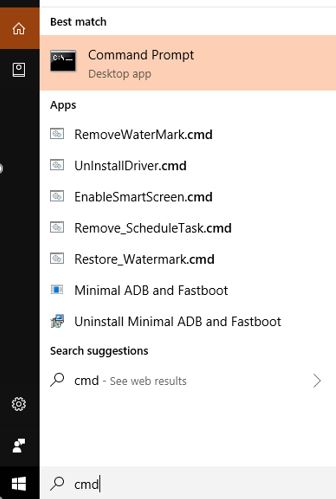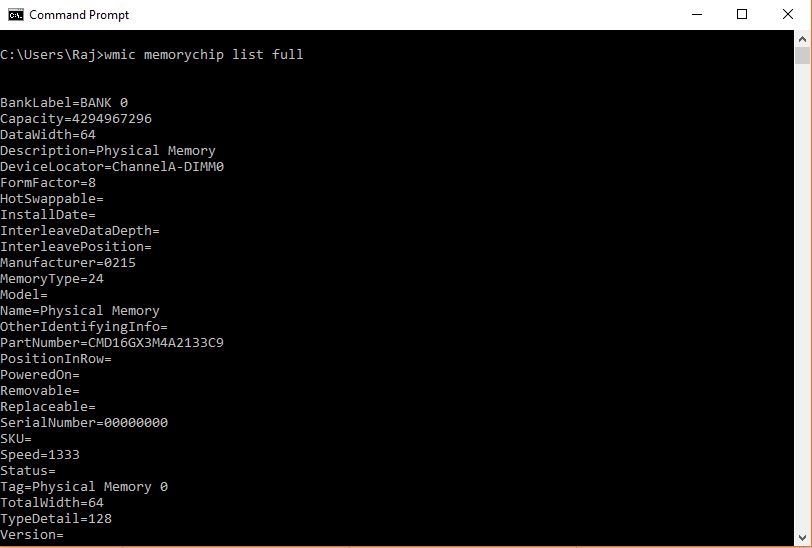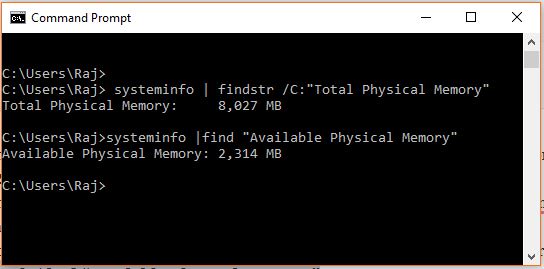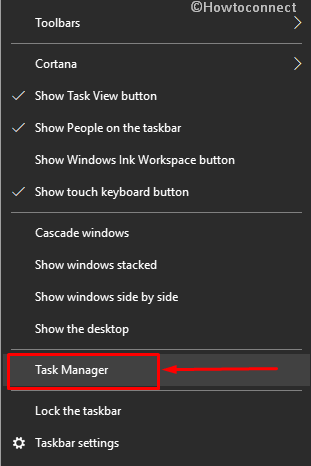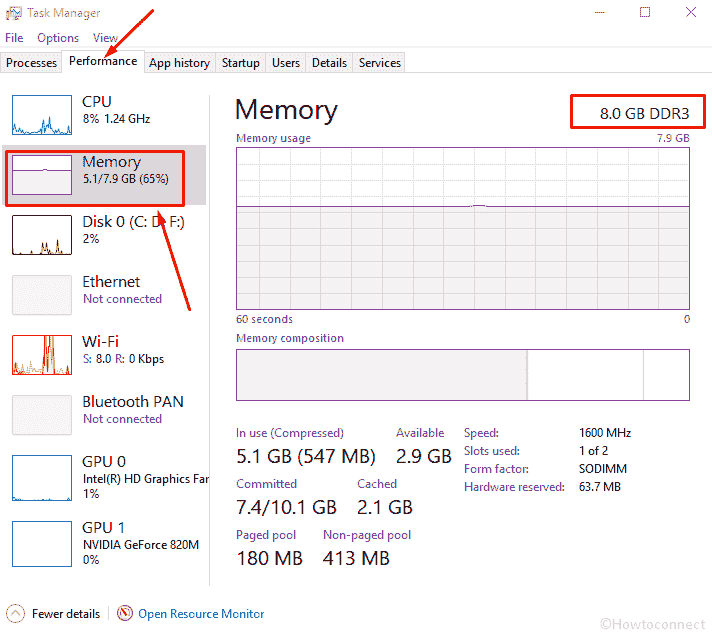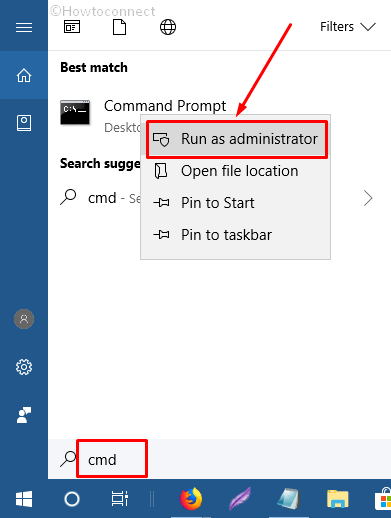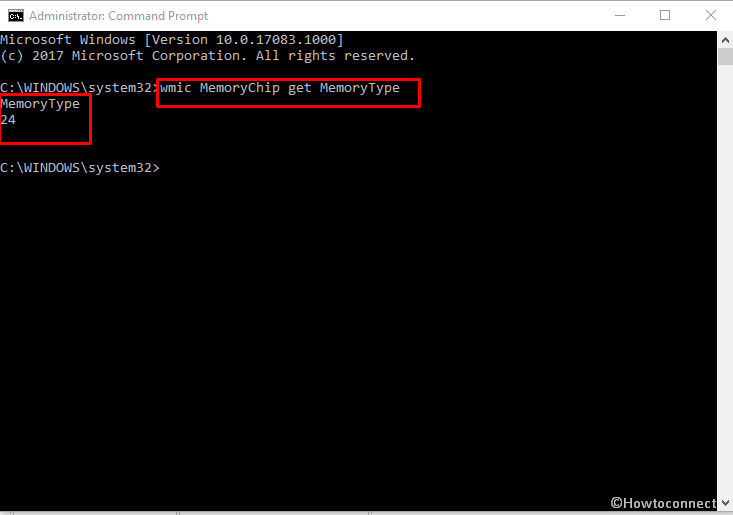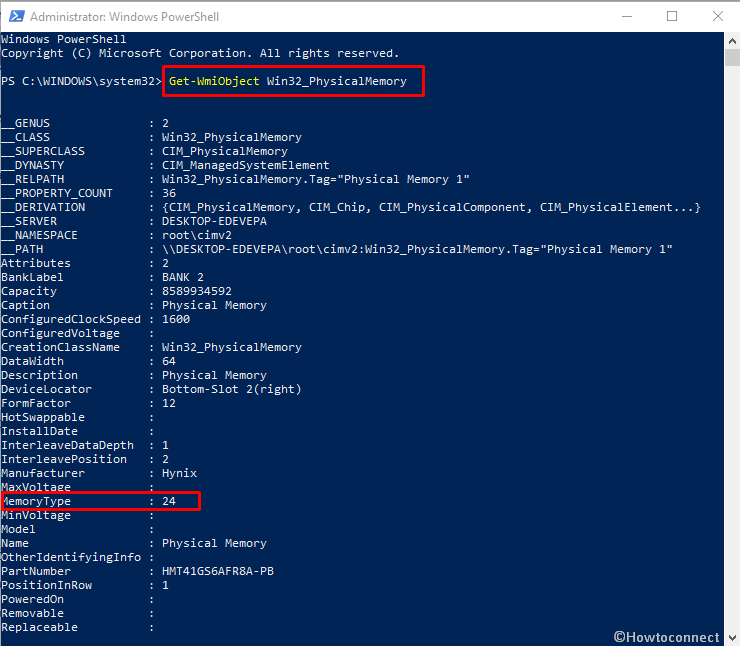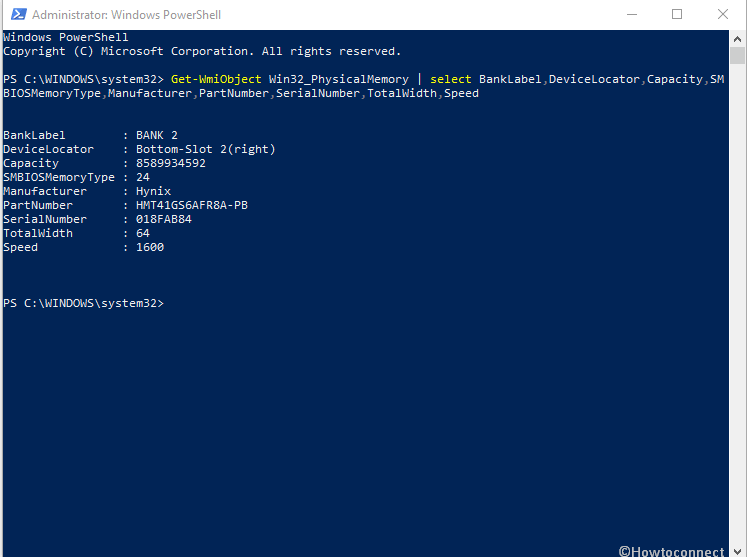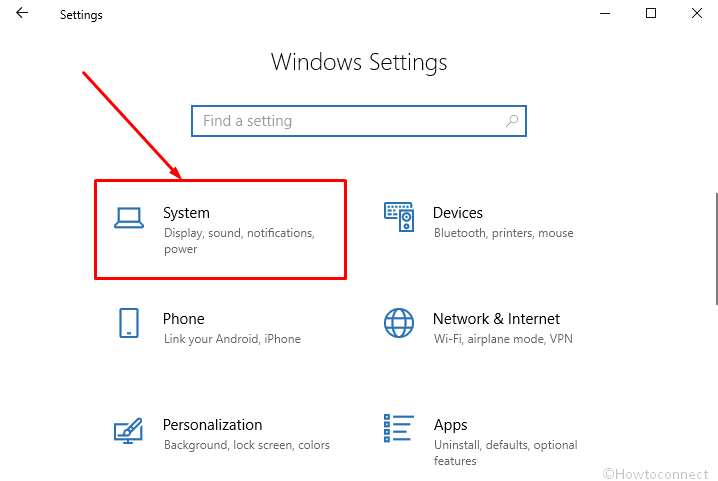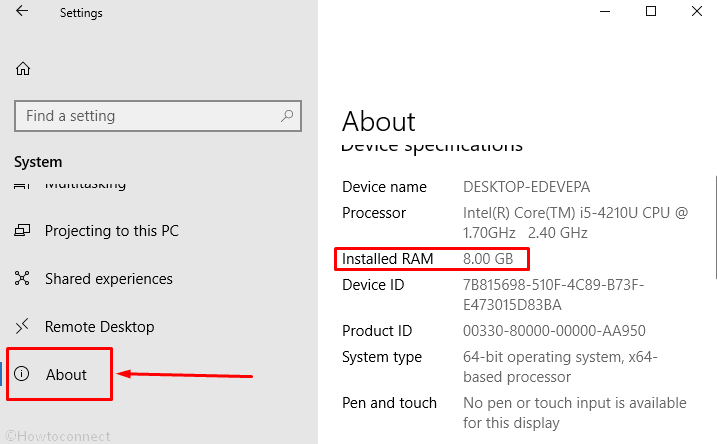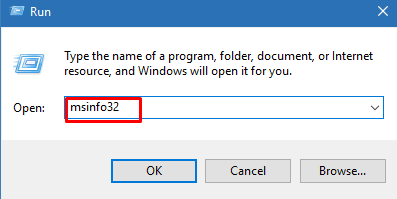- How to check ram frequency using CMD in Windows 10, 8, 7 & XP
- How to check ram frequency using cmd via WMIC command
- Command to see the total amount of RAM and Available Physical memory on the Windows
- How to Check Ram Type in Windows 10 like DDR, DDR2
- How to Check Ram Type in Windows 10
- Find using Task Manager
- How to Check Ram Type in Windows 10 through Command Prompt (Admin)
- How to Check Ram Type in Windows 10 via PowerShell
- Check Ram Size in Windows 10 using Settings
- Find RAM Size using System Information
- Using 3rd Party tools
- RAMMon
- ScanMyPC
- Closing words
How to check ram frequency using CMD in Windows 10, 8, 7 & XP
We already have written a tutorial article in which we have shown how to check the RAM Speed using software called Piriform Speccy. And, today in this tutorial will show you how to check ram frequency using cmd (command prompt) in your Windows 10, 8, 7 and XP PC. The CMD method is fast but if you want to know about your installed RAM memory stick in details and easy way, then you can see our article: How to check ram frequency and RAM type in Windows 10, 8.1, 7, Vista and XP.
In Windows, if you just want to check the RAM speed and RAM Type then you can use two methods one is via Windows Task Manager and the other one is the command prompt. We will discuss the command prompt one here.
How to check ram frequency using cmd via WMIC command
- Go to start menu and type CMD
- Run the CMD command prompt on your Windows system administrator.
- Type the command “wmic MEMORYCHIP get BankLabel, Capacity, DeviceLocator, MemoryType, TypeDetail, Speed” or simply copy paste it.
- If you just want to know the total amount of available RAm on your system, type: systeminfo | findstr /C:”Total Physical Memory”
- And to get information about the available amount of RAM out of the Total physical memory then type: systeminfo |find “Available Physical Memory”
Tutorial with screenshot
The steps we are using in this article are the same for Windows 10, Windows 7, Windows 8, and Windows XP.
We can check the RAM frequency, type and total available memory using two commands in the Windows. One is wmic and other is systeminfo both are the basic Windows command and easy to use. We show you how to use both commands in the steps given below.
Step 1: From the start menu, type the CMD and select the Command prompt option.
Step 2: Once the command prompt of Windows opened, Type the following command and press Enter button:
BankLabel: This will assign a physical label to your RAM like 0,1,2,3… depends upon the number of RAMs installed on your PC.
Capacity: This option will show the capacity of each RAM (in bytes) available on the Windows PC of yours.
DeviceLocator: This syntax of command will show in which slot or channel your RAM has been installed.
MemoryType: If you want to know about your DDR RAM type using the CMD (command prompt) in Windows then this Syntax will show. However, the DDR memory types output it provides are in numbers. Here are the MemoryType output value and its corresponding RAM type installed on your system.
- 0 = Unknown
- 1 = Other
- 2 = DRAM
- 3 = Synchronous DRAM
- 4 = Cache DRAM
- 5 = EDO
- 6 = EDRAM
- 7 = VRAM
- 8 = SRAM
- 9 = RAM
- 10 = ROM
- 11 = Flash
- 12 = EEPROM
- 13 = FEPROM
- 14 = EPROM
- 15 = CDRAM
- 16 = 3DRAM
- 17 = SDRAM
- 18 = SGRAM
- 19 = RDRAM
- 20 = DDR
- 21 = DDR2
- 22 = DDR2 FB-DIMM
- 24 = DDR3—May not be available; see note above.
- 25 = FBD2
Here, while performing this tutorial, I got value 24 for Memory Type that means my system RAM type is DDR3.
Speed: Here, you will get the speed or so-called frequency of the RAM of your system in MHz; for which you are reading this article.
TypeDetail – It will tell you type of the physical memory installed on your system. The different value output represents different Type; please follow the value and its corresponding Type details output given below:
- 1 = Reserved
- 2 = Other
- 4 = Unknown
- 8 = Fast-paged
- 16 = Static column
- 32 = Pseudo-static
- 64 = RAMBUS
- 128 = Synchronous
- 256 = CMOS
- 512 = EDO
- 1024 = Window DRAM
- 2048 = Cache DRAM
- 4096 = Non-volatile
Output screenshot:
Another Windows Command that will show complete details about your installed RAM is
The output of this a bit clutter and confusing but still you use it to get full detail about the RAM of your system.
Command to see the total amount of RAM and Available Physical memory on the Windows
As I told, you can use the sysyteminfo commands on CMD of Windows to know about the total physical memory, here they are:
First will show the total amount of RAM and second gives info about the available RAM to use out of the Total.
You might be interested in:
How to Check Ram Type in Windows 10 like DDR, DDR2
Sometimes it becomes essential to know How to Check Ram Type in Windows 10 before you change or add a new memory stick or buy a new system. There are 24 RAM specifications like DDR, DDR2, SDRAM, EDRAM you might need to find out at this moment. Several built-in utilities help you to find out this info such as task manager, Command Prompt, PowerShell. You will get here few methods using these including 3rd party tools so that you could find out the memory type easily on your system.
How to Check Ram Type in Windows 10
Random Access Memory in short RAM is utilized by CPU as temporary memory storage to make the performance faster. RAM type determines the quality of memory chip and DDR, RDRAM, and SDRAM are supposed to be better.
Below methods will be thoroughly helpful to know How to Check Ram Type in Windows 10.
Find using Task Manager
When you want to check Ram Type in Windows 10, the task manager is the easiest and effective native utility. We have already written an article in some different context – How to Analyze Resources Performance in Task Manager Windows 10. You will get your requisite information from here in only a few clicks on your system.
- Make a right-click on any void space in the Taskbar and select Task Manager from the list.
- The tool opens with Processes tab by default, so select Performance (just next) to switch.
- Once the Task Manager comes, do a click on Memory from the left pane.
- You will observe RAM type and size from the upper section which clearly reveals at the top.
- If you want extra information such as numbers of slots, committed memory, cached memory then go down just below the graphical view.
How to Check Ram Type in Windows 10 through Command Prompt (Admin)
Another way to check the ram type is possible through running a simple command in Command Prompt. This will output your RAM type in numeral form so we are giving a table deciphering the meaning of each number.
Step-1: Type cmd in the Cortana search box located beside Start.
Step-2: At once a UAC pop up will appear, choose Yes.
Step-3: Once “Command Prompt” appears at the top, put a right click on it and choose “Run as Administrator”.
Step-4: Type the below command here and Hit the Enter button:
wmic MemoryChip get MemoryType
Description will not appear after the command runs instead you see number representation. Match the number with the following list to ascertain your RAM type.
| RAM type in Number | Type of Physical Memory |
| 0 | Unknown |
| 1 | Other |
| 2 | DRAM |
| 3 | Synchronous DRAM |
| 4 | Cache DRAM |
| 5 | EDO |
| 6 | EDRAM |
| 7 | VRAM |
| 8 | SRAM |
| 9 | RAM |
| 10 | ROM |
| 11 | Flash |
| 12 | EEPROM |
| 13 | FEPROM |
| 14 | EPROM |
| 15 | CDRAM |
| 16 | 3DRAM |
| 17 | SDRAM |
| 18 | SGRAM |
| 19 | RDRAM |
| 20 | DDR |
| 21 | DDR2 |
| 22 | DDR2 FB=DIMM |
| 24 | DDR3 |
| 25 | FBD2 |
How to Check Ram Type in Windows 10 via PowerShell
Fortunately, few PowerShell commands tell you the whole story of the Ram Type, size, number, slots manufacturer, serial number, speed and a lot more. And it needs the lesser effort rather than the command prompt because you can open it simply from Power user menu. So we suggest using PowerShell when you are going to Check Ram Type in Windows 10.
- Press Windows logo and X keys altogether and let the Power menu appear. Select Windows PowerShell (Admin) from the list.
- Select “Yes” on the “User account control” pop up covering the system screen.
- Soon you will experience Administrator: Windows PowerShell on your computer. Copy the following piece of command, paste there and then press Enter:
- One more command also works pretty effectively, so copy (without quotes) it from underneath, paste, and hit Enter as an alternative:
If you need to detect only the size of RAM there are two additional methods further.
Check Ram Size in Windows 10 using Settings
The Settings application has About section that includes the info about the Installed RAM. See the method –
- Hold down the Windows logo key and I letter on your keyboard at the same time.
- Once the Windows Settings appears, select System.
- Go to the left pane on the next screen, scroll down and make a click on About. Move to the opposite side and Locate Installed RAM to find the magnitude of the memory.
- If you want to see the same information on the Control panel then click on System info.
- Alternatively, You can get access the same location following this path – Control panel => System.
Find RAM Size using System Information
System information tool reveals a report of your PC configuration that includes RAM, Hardware resources, “components”, software environment. So far as the question of memory, you can find its volume installed on your computer.
- Perform a Click in the search bar located at the taskbar just before the Task view icon, type msinfo32 and then hit Enter.
- Once the System information window comes up, find Installed Physical Memory (RAM) and its volume.
This was all about How to Check Ram Type in Windows 10 using the built-in tools,
Using 3rd Party tools
Few third party tools play outstanding roles to check Ram type in Windows 10 when you are going to memory upgrade on your system. We are here sorting the foolproof applications taking into account that you could gain the info without a hitch.
CPU-Z is the most popular freeware and provides all the information about hardware in your computer. You get Ram type, channel #, size, NB frequency, cycle time, and a lots more on a simple interface. The powerful hardware detection tool is based on kernel-mode software driver and collects the information in real time. Qusere engine of this app is very prompt so you don’t need to wait anymore. So you can use this utility without hesitation to check the memory type on your Windows system.
1. Download CPU Z from here and install following the onscreen instructions.
2. Launch the tool and go to Memory tab see all the specifications.
RAMMon
This is a simple working Windows-based application that allows seeing the details of Ram modules. RAMMon uses system information dll SDK to retrieve data of memory installed on your device. You will find the RAM type such as DDR, DDR2, DDR4, XMP, EPP, write recovery time, maximum capacity, bandwidth speed comic locker speed and everything you need. Hinging on RAM type, and other distinct SPD data can be reclaimed as well, for example, the module thickness, width, and other. RAMMon is absolutely free for personal use and has a very small size.
- Navigate to RAMMon official website and download the utility https://www.passmark.com/ftp/rammon.exe.
- Open the tool and perceive all the data you wanted.
SIW is one more tool that lets you check ram type with a lot of additional information on Windows. If you need to find out Memory type, manufacturer name, total and used volume, number of slots, serial number then this is an ideal application. An extra feature is you can create XML report of the info provided by SIW. The software comes as trial version for 30 days, so grab it at current time without paying any cost.
1. Take SIW from https://www.gtopala.com/thank-you/siwviewer.php, download and install on your system. Double click on the Setup icon and allow to expand on the system screen.
2. Select Memory tab from the left pane and find the RAM Type in the Properties column.
ScanMyPC
ScanMyPC is one of the easy-going tools that displays RAM Type on the browser window. The app reads details set on your computer by the manufacturer with the model and throws out on its website. When you run ScanMyPC it automatically sends there and asks you to click on View results. You comprehend the description of System Manufacturer, System Series / Model, Motherboard, Total Installed Memory, Memory Type, Modules Installed, Operating System. If you need to get more about your RAM click on Show Advanced Details.
Closing words
When you have performed finding out with the help of How to Check Ram Type in Windows 10 like DDR, DDR2, SDRAM etc, choosing best one is easy. Now check the capacity that will fulfill your need and upgrade or purchase your memory chip to have a good computing experience. We hope the methods will help you to enjoy Windows 10 PC.
